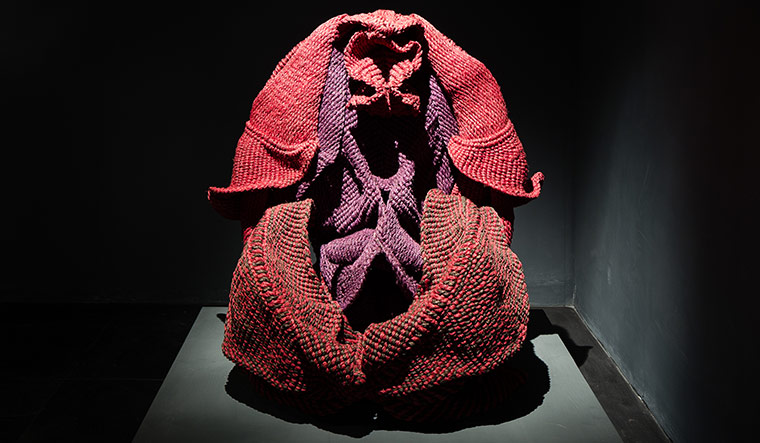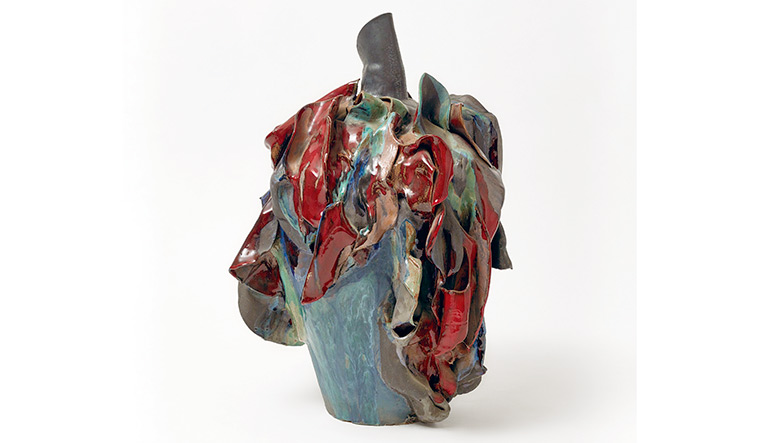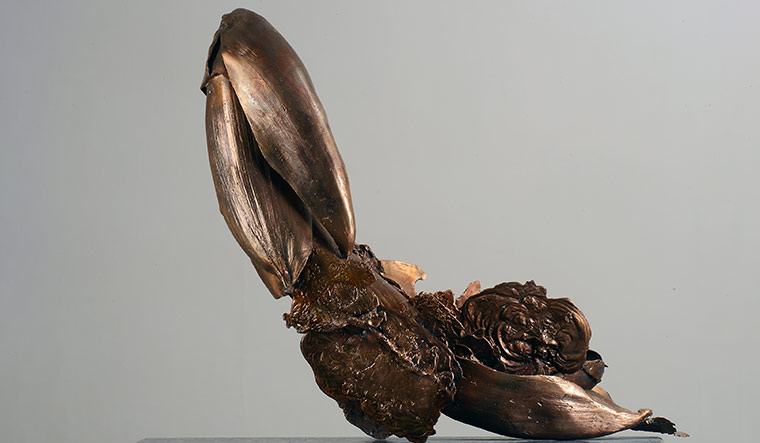While studying mural painting at the M.S. University in Baroda, Mrinalini Mukherjee (1949-2015) discovered hemp-rope at a market in Gujarat. She learnt a way of knotting the fibre that would result in some of her best-known sculptures. At a time when most sculptors were working with wood, clay or stone, Mukherjee’s love affair with fibre would imbue her work—which lies at the intersection of nature, sexuality and divinity—with a certain uniqueness. Although she experimented with bronze and ceramic in the latter part of her career, her work with fibre would lend, what a critic called, an “aesthetic animism” to her figures.
Now, the Met Breuer, part of the Metropolitan Museum of Art in New York, is holding the first retrospective of Mukherjee’s work in the US. Fifty-seven of her sculptures will be on display at the museum till September 29. The exhibition is organised by Shanay Jhaveri, assistant curator of South Asian Art in The Met’s Department of Modern and Contemporary Art. As soon as he joined The Met in 2016, Jhaveri proposed Mukherjee’s show. “Her sculptures challenge the imagination to go beyond logic and reason and enter into a world that is teeming and full of potential,” he says.
Many of her works were inspired by nature, which, according to Jhaveri, she saw as “alive, fertile and eroticised”. Her love for it can perhaps be traced to her childhood divided between the “picturesque foothills of the Himalayas and the flat rugged landscape of Santiniketan”. Both her parents were artists from Santiniketan. In fact, Mukherjee was named after Rabindranath Tagore’s wife. Although she initially dabbled mostly in wall hangings, from the 1970s onwards she began experimenting with towering monolithic figures that existed, as a critic described them, “between the botanical and the biological”. She detached her works from the wall and rejected the use of pedestals. She was aiming for, what she called, “the feeling of awe [you get] when you walk into the small sanctum of a temple [and] look up to be held by an iconic presence”.
In fact, she constantly strove to inspire awe in her viewers, with her works growing grander, bolder and more risqué over the years. In her work Woman on Peacock (1991), for example, she flirts with blatant sexuality by portraying a woman astride a male form. In Pushp (1993), a magnolia flower with several folds of knotted layers makes an oblique reference to female genitalia. “It is at once sensual and formidable,” wrote Australian curator Victoria Lynn in an essay on Mukherjee. “It has a presence beyond its size.”
In many ways, Mukherjee was a misunderstood artist in India, but received more appreciation in the west, being included in biennials in Australia, France and Cuba. From the 1990s onwards, her interpretation of classical iconography was misread by some as religiosity. This was at a time when religious fundamentalism was growing in India. While they were largely rejected in India, her figures were applauded in the west for their “otherness” and what some perceived as an “oriental flavour”. In reality, Mukherjee was always more interested in craft and folk traditions than in religion. “My idea of the sacred is not rooted in any specific culture….,” she once said. “The countryside is filled with places where divinity dwells…. It is often a sense of space, scale or presence that gives me a sacred feeling, and this could occur anywhere in the world.”
Mukherjee was also extremely fastidious about how her work was to be displayed. It was the one thing that was a revelation to him, says Jhaveri. “She drew up with the assistance of her ex-husband, the architect Ranjit Singh, very detailed ‘installation instructions’ for how the works were to be installed when she could herself not be present,” he says. “Meticulous and annotated carefully, these instructions detailed how the works should be hung and at what distance from the ground and ceiling…. These instruction sheets are a fascinating insight into Mukherjee’s working process, and also demonstrate her awareness of the implications of space and architecture on how audiences would perceive and experience her sculptures.”
It was this same thoroughness that she brought to her last exhibition, Transfigurations—a retrospective of her works at the National Gallery of Modern Art in Delhi. She was 65 then, and despite her deteriorating health, she monitored every detail of how her works were to be put up. She was hospitalised a day before the exhibition was inaugurated by fellow artist Nilima Sheikh, and died a week later. She never deified her figures, yet they inspired a kind of reverence. There is something ominous yet compelling about them. Much like the artist herself, they elude definition.





